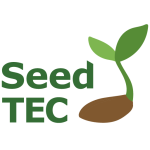
Chuen Lung Watercress
“The watercress I grow like this is the best,” said Chuen Lung villagers Mr Lo and Ms Wong respectively. They both grow watercress, but the former grows on dry land while the later grow on water field. Watercress, which means “Western vegetable” in Chinese, is one of the famous agricultural products in Hong Kong and a local flavour written by renowned writer Mr Ye Ling-feng. Since its introduction to Chuen Lung Village in 1958, Chuen Lung Watercress has gradually become a norm for villagers to plant to survive. As an asexually propagated vegetable variety, watercress seeds can only be successfully retained in Chuen Lung Village in Hong Kong. Where does Hong Kong watercress come from? And why are the two farmers so confident? We have visited these two farmers to find out their stories of growing watercress.
Mr Lo moved to Chuen Lung with his parents when he was young. Discovering that all their neighbouring households grew watercress, they bought watercress seedlings and tried planting. In Mr Lo’s memory, he has never seen the seeds of watercress. In fact, a watercress ‘seedling’ refers to ‘uprooting the whole seedling, with head and root’. Purchasing and planting a small amount of seedlings, watercress will continue to grow and gradually be retained. As watercress is originated from temperate belt, it needs to cool down in hot summer climate. Since Chuen Lung is situated at the mountainside of Tai Mo Shan, it has a relatively cool climate and cool mountain spring water flowing through, thus it has become the only place for retaining watercress seedlings.
Mr Lo recalled, in the 1970s, early autumn is the happiest season for Chuen Lung farmers, who went to the field at mid-night to uproot watercress seedlings and pick watercress. The watercress was transported from Chuen Lung vegetable station to Cheung Sha Wan Vegetable Marketing Organization by truck early morning and sold in a large quantity, while the watercress seedlings were bought by farmers from Sheung Shui and Fanling. They could earn a good income by selling the watercress seedlings alone. Until then, when Hong Kong’s economy took off, a large number of farmlands were turned to high-rise buildings. In addition to the cheap vegetable importing from mainland China due to the Reform and Opening Up, local watercress cultivation gradually declined; nowadays only a few farms in Chuen Lung and Yuen Long still plant in a small amount.
Mr Lo and his younger brother are one of the farming households who still insist on growing watercress. Feeling reluctant to let their parents’ painstaking efforts disappear, they took over their work after retirement. They plant watercress on dry land according to the traditional method taught by their parents, water them frequently every day, and insist on using organic fertilizer. Owing to the disappearance of fish bone fertilizer used in the past (The shark meat was minced, dried and cut into blocks of organic fertilizer) and the case of peanut bran in high price and low quality, Mr Lo came up with his own ingenuity to soak the chicken feathers and fish gill intestines into fertilisers. His tender watercress without residue has now become one of the famous Chuen Lung flavour that attracts many customers to return. “Those who have eaten my watercress can never forget it,” he said proudly. “You cannot find such delicious watercress in Hong Kong.”
Ms Wong, who is not far away, is another watercress farmer in Chuen Lung. She came to Chuen Lung from Dongguan in 1996, took over 12 pieces of farmlands with seven mu in total from her uncle and started growing watercress on water field. The watercress she grew is neither germinated from seeds, but instead she bought seedlings and plant them directly into the field. The seedlings are then retained by forming a self-sufficient cycle. She insists on planting her own seedlings, using peanut bran as organic fertilizer, and burning grass every year to remove acidity. “Watercress growing on water field tastes better,” she smiled and said confidently. “You can either boil it, put it in soup, or fry it.”
Her watercress has been supplied to the nearby Duen Kee Chinese Restaurant for 30 years. Many tourists and hikers come to her field to buy watercress, and they even have to queue for two hours on Saturdays and Sundays. The relationship between her and the customers has gradually developed. During our interview, some customers came to buy a few kilograms of watercress wrapped in plastic bags. Raising her two children by growing watercress, she did experience downturns, fortunately several close customers lent her money so that she could overcome the difficulties.
The original physical watercress seeds may no longer be found, but Chuen Lung people’s adherence to the tradition, diligence and steadfastness of the original intention and the derived confidence can be buried in the field and give birth to the vitality of leaves and roots. Unfortunately, it is unknown whether their watercress can be passed down. The children of Mr Lo and Ms Wong have already indicated that they will not take over. “The youngsters do not farm because they cannot make money but feel toilsome and tied up. We two brothers will farm for several more years, then stop due to the lack of strength,” the seventy-year-old Mr Lo sighed. On the other hand, Ms Wong feels difficult to determine whether watercress will be lost and thinks it depends on luck. “Some people may farm in the future, but the planting method may be different,” she said. We all hope that Chuen Lung Watercress, this famous local vegetable, can long be passed on regardless of the changes in times.
Acknowledgement: Mr Lo, Ms Wong, Chuen Lung Village Chief Ms Wong, and Shap Pat Heung Resident Association Committee Ms Jade Wong
Text: Zoe Gan and Joanna Wong (May 2021)
Video: Joanna Wong
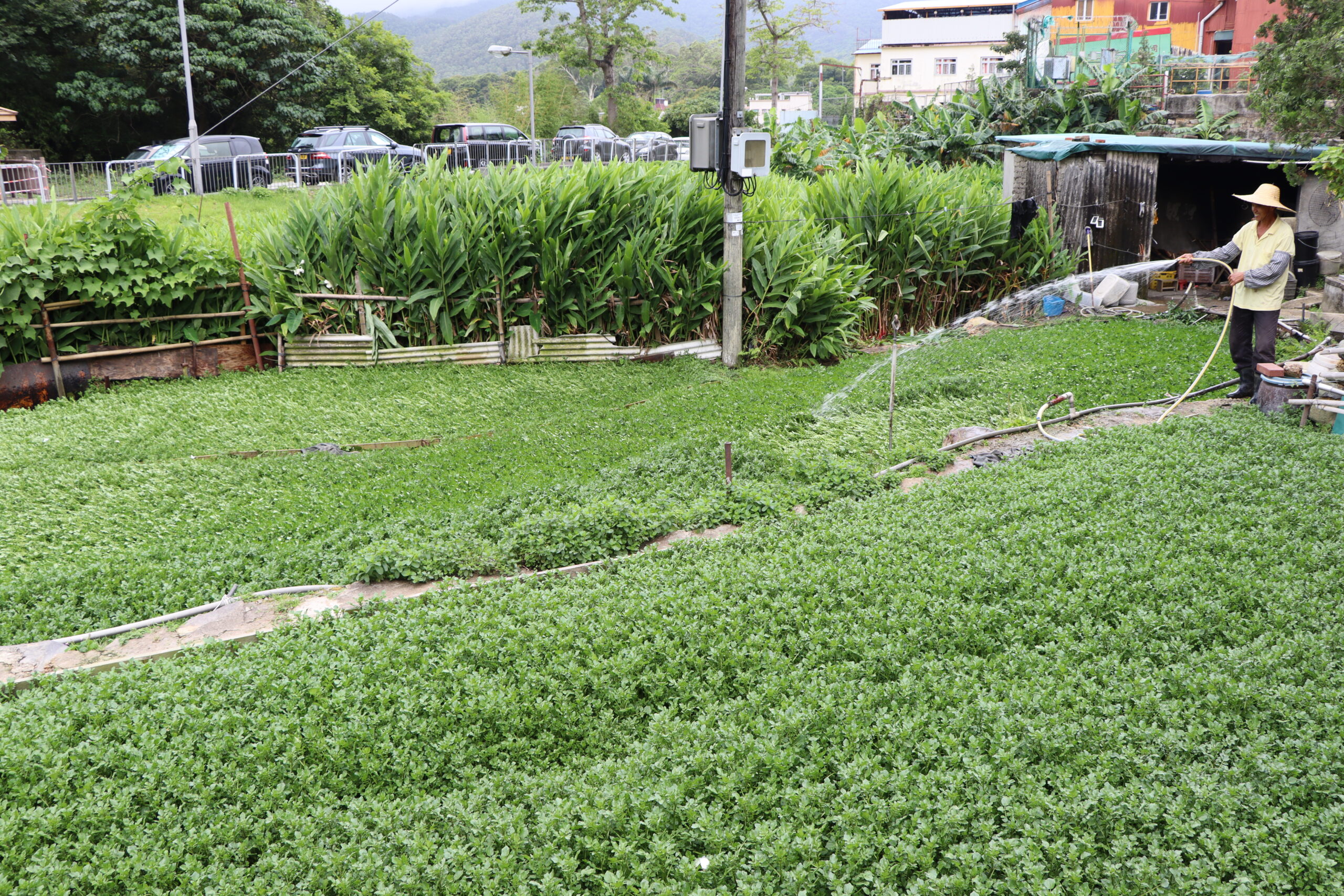
Mr Lo’s younger brother is watering their Chuen Lung watercress.
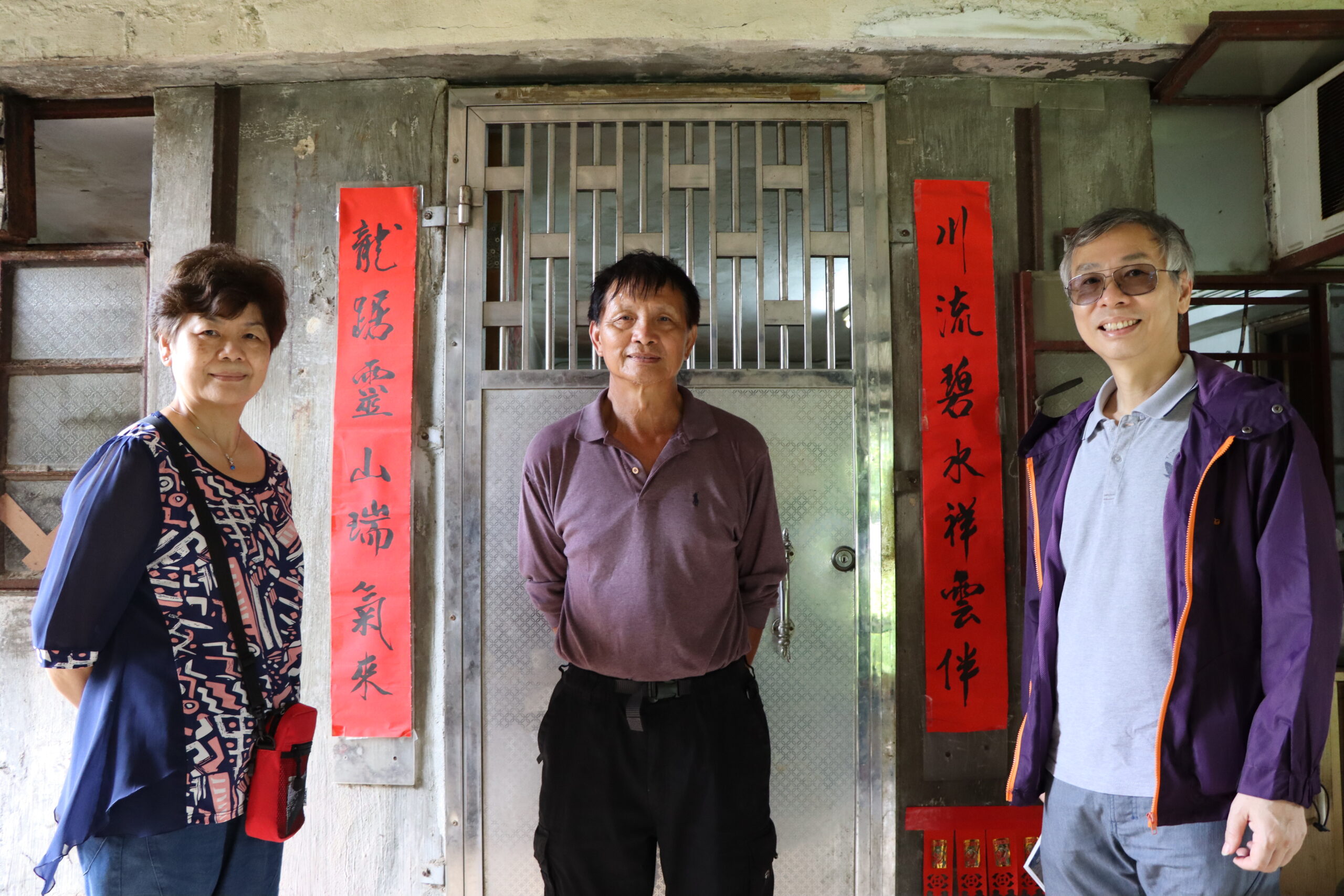
Village Chief Ms Wong (left), Farmer Mr Lo (middle), Professor Hon-Ming Lam (right)
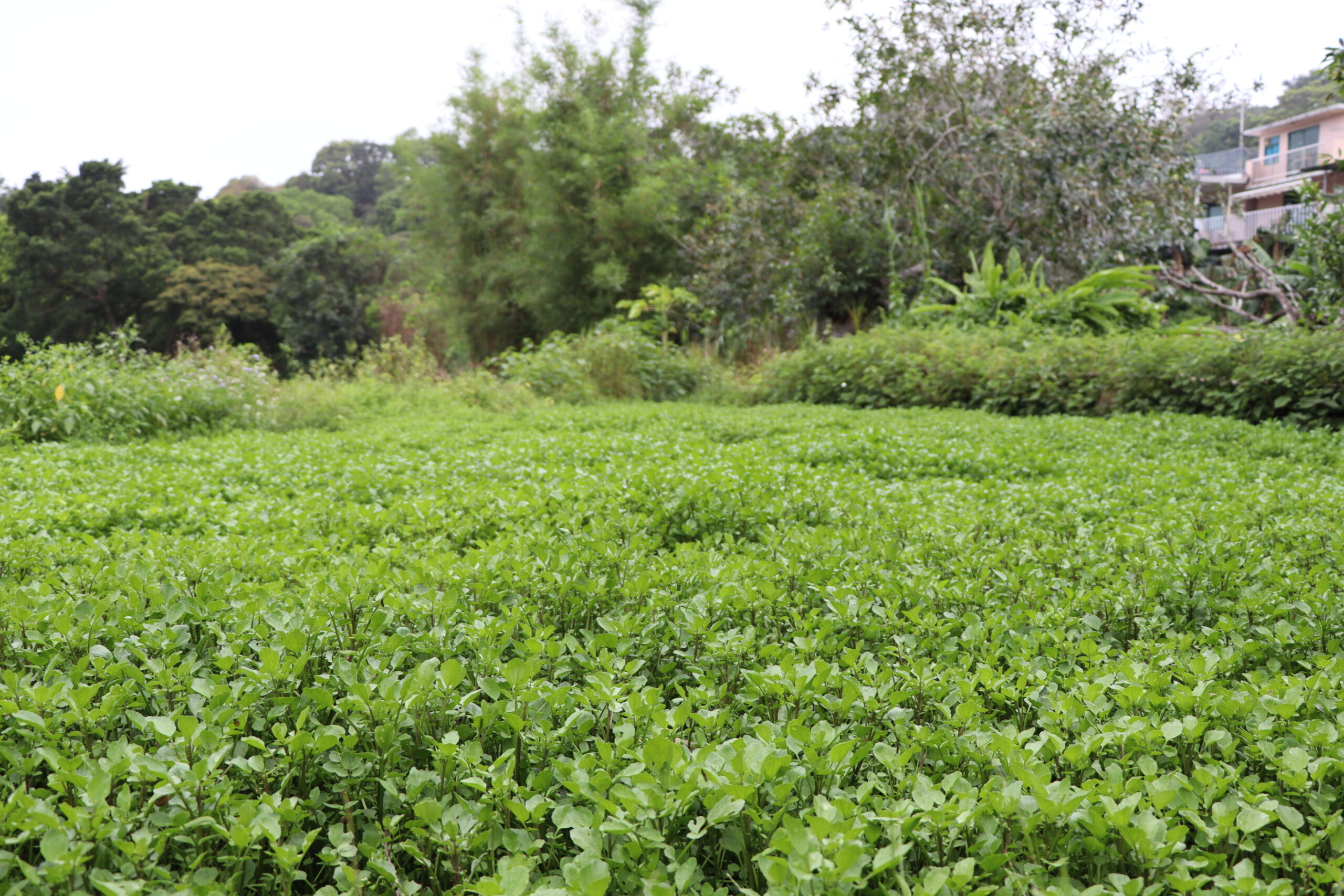
Ms Wong has 12 pieces of Chuen Lung Watercress fields.
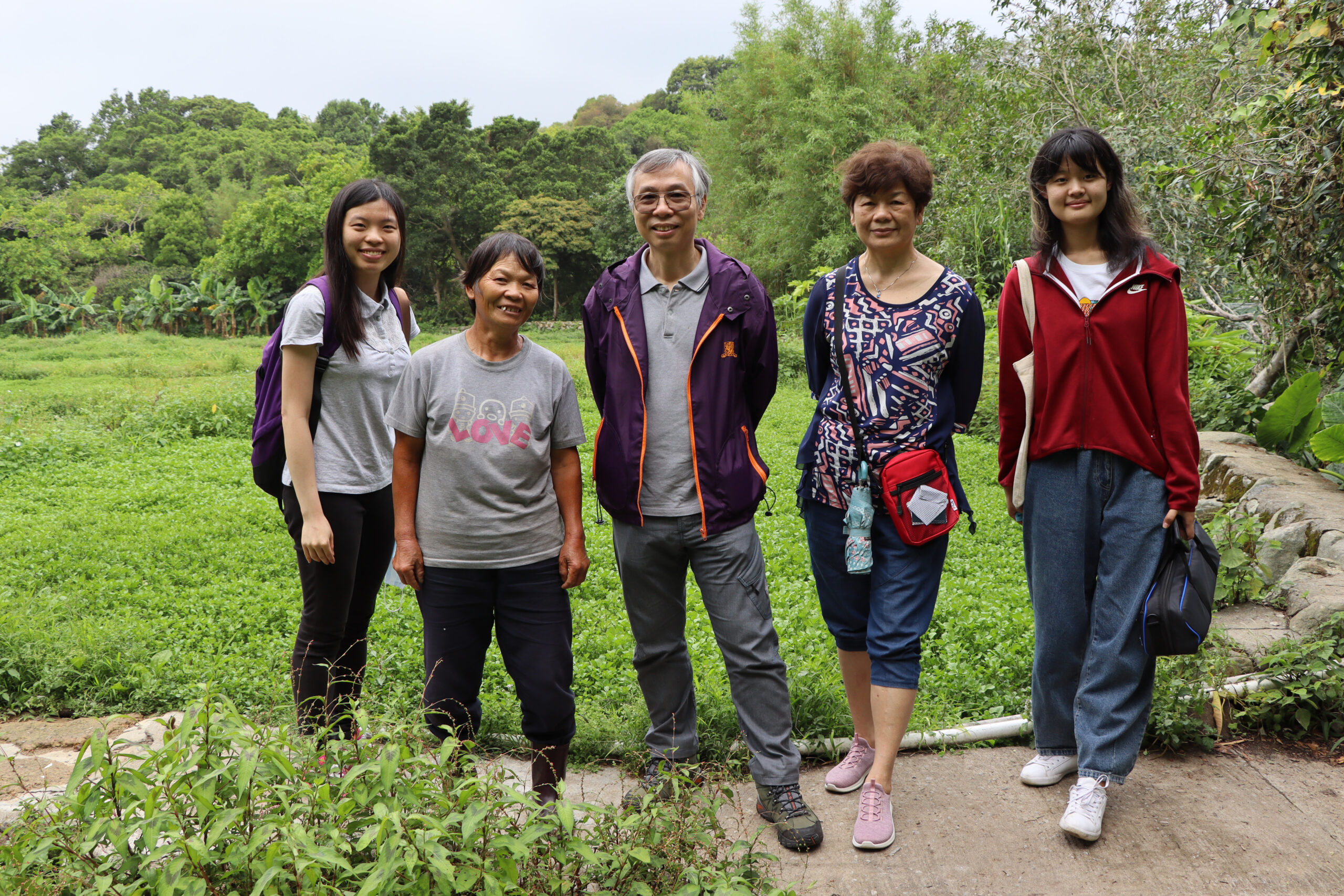
Farmer Ms Wong (second left)
